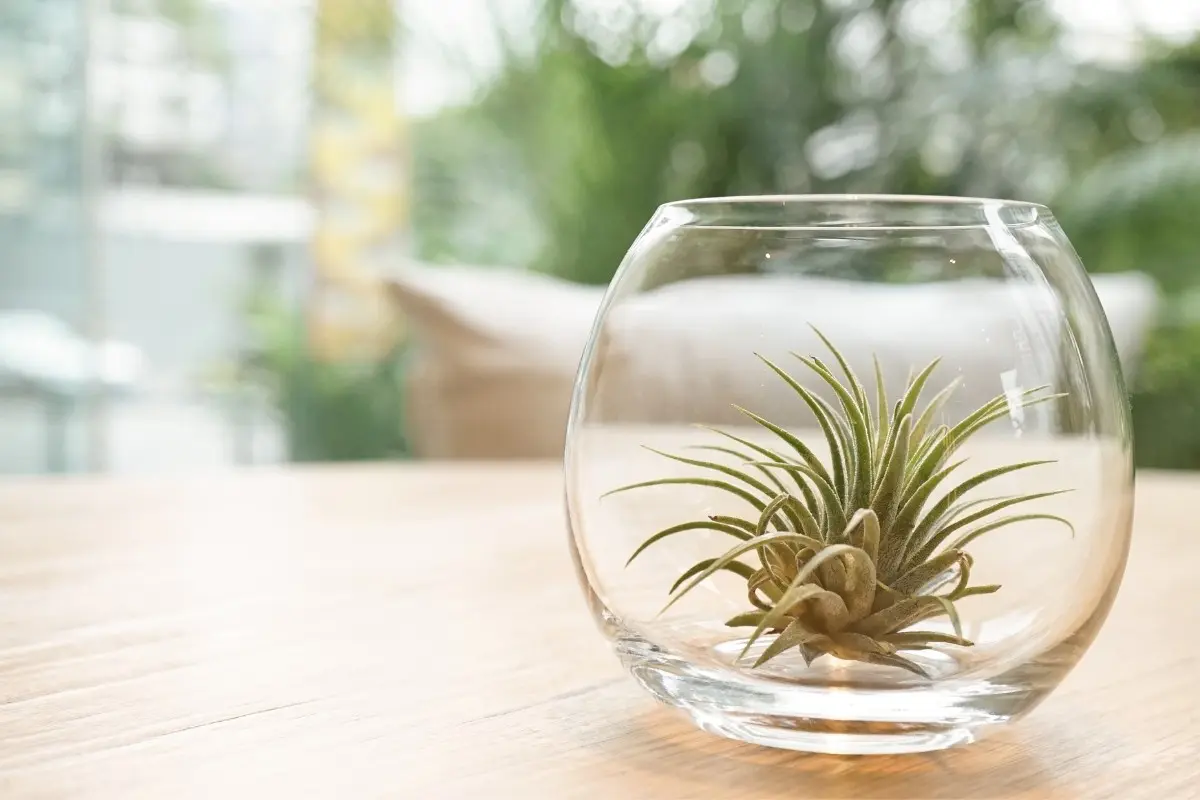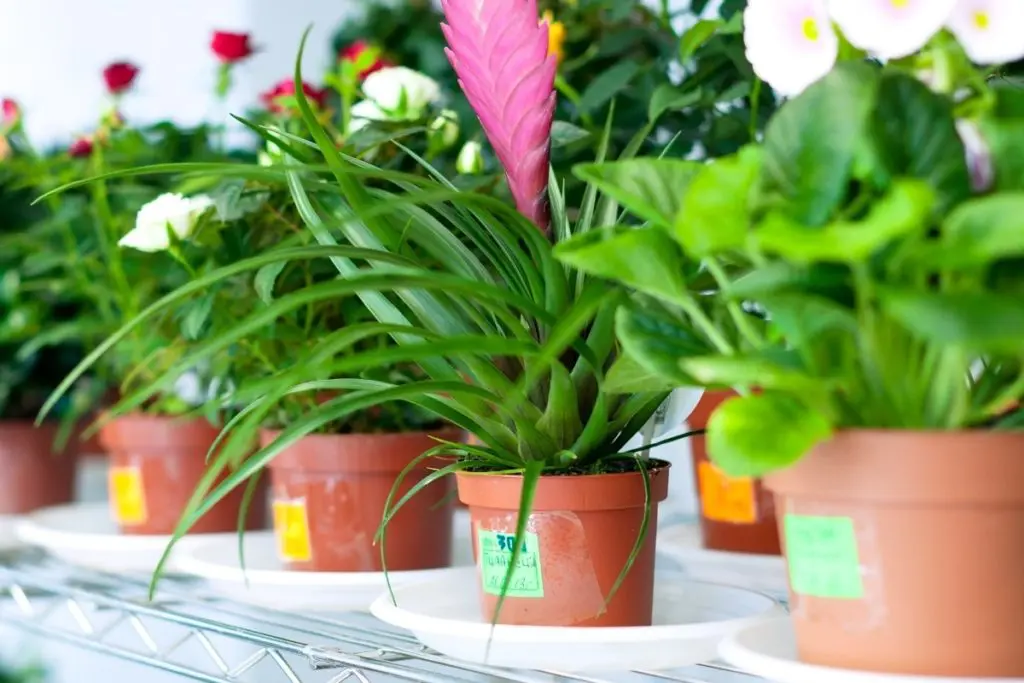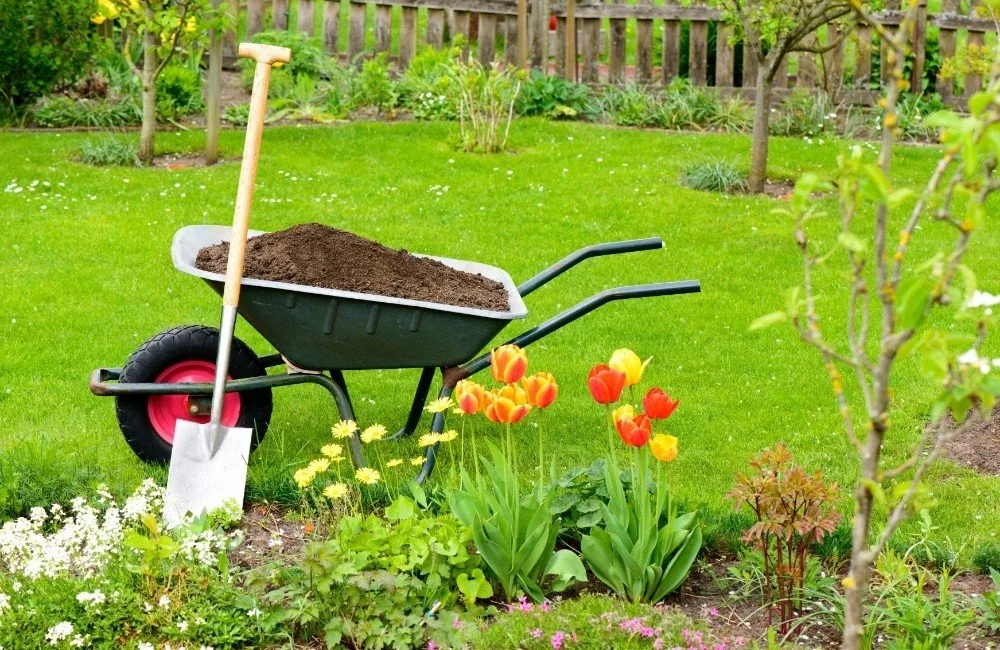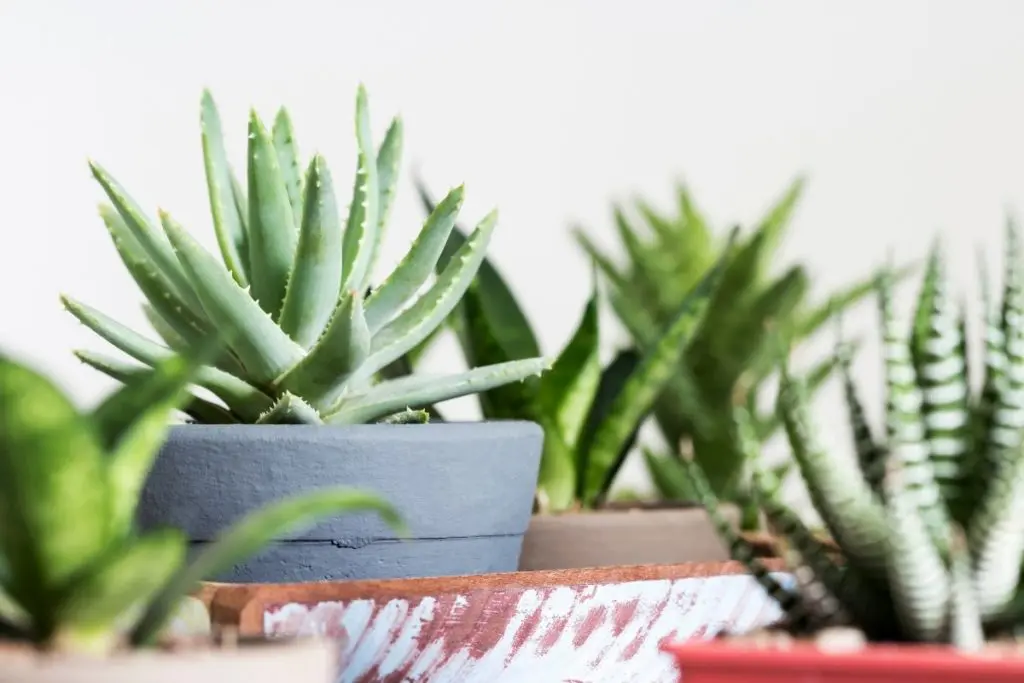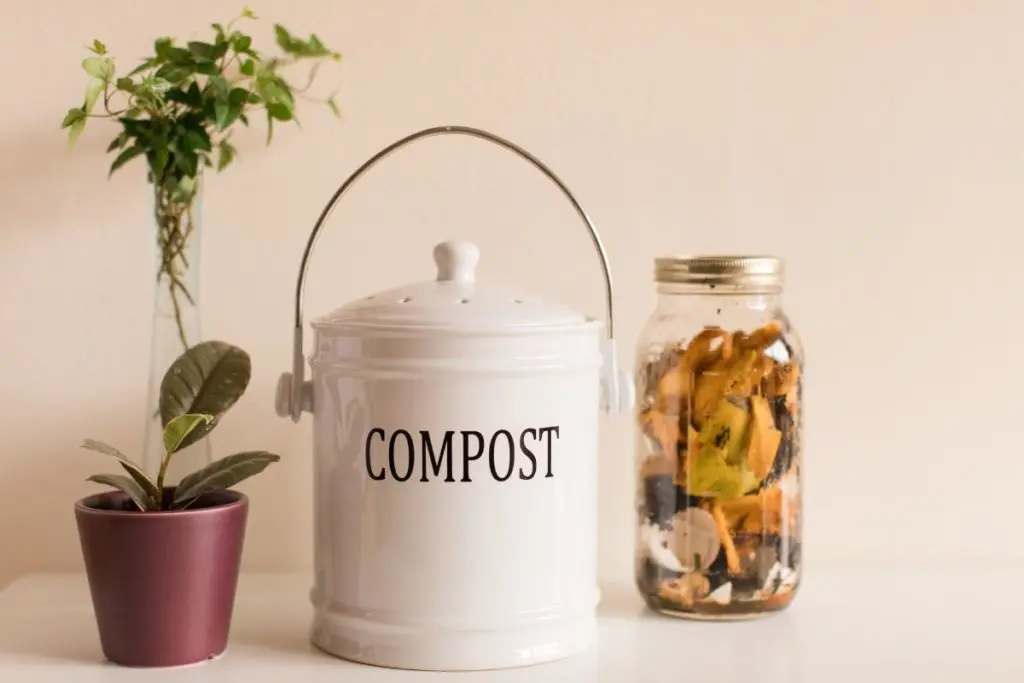Air plants are fun, trendy, and easy to care for, and, let’s face it: they’re undeniably cute. These charming little plants can be displayed in countless creative ways and make for beautiful decorative pieces and interesting conversation starters. In this article we’re taking a look at some of our favorite types of air plants and what makes them special.
What Are Air Plants?
In the wild, air plants don’t grow in soil. Instead, they cling to the branches of trees or live on top of surfaces like rocks, bark, or moss. They often appear to magically grow in the air, hence the popular name.
But what we’re really talking about is Tillandsia, an Epiphyte (a plant that requires no soil to grow) that’s part of the Bromeliad species. Instead of absorbing water and nutrients through roots, Tillandsia are covered in trichomes — tiny silvery scales which gather water from their leaves.
10 Unique Types of Air Plants
While there are well over 450 different types of air plants, we’ve rounded up 10 of our favorite Tillandsia. Here are our picks in order of size, from the truly itsy-bitsy to a couple of large show stoppers.
1
Tillandsia Ionantha Fuego
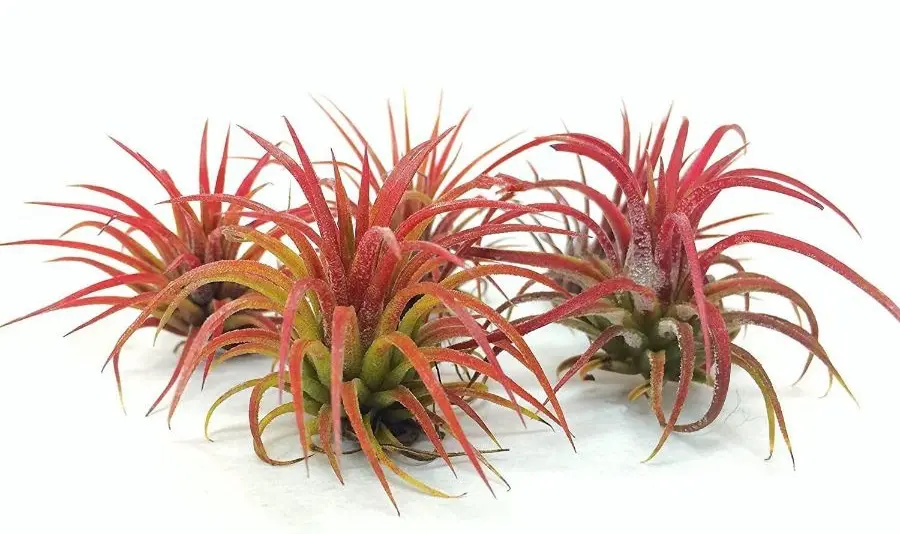
Native To: Mexico and Central America | Average Size: 1-2″ | Flowers: Red, yellow, and violet flowers | Likes: Bright but indirect sunlight, humidity, warmth | Dislikes: Temps below 50 degrees; overwatering | Watering Instructions: Soak for 30 mins twice a month, mist every 4-5 days
The Fuego is one of the most popular and easy-to-find air plants. It has distinctive leaves that range from lively green to a deep pink coral during blooming. Most fuegos stay diminutive, growing only about an inch tall, though you can find varieties that are a little larger.
Because of their small size, they work well tucked into all sorts of pots, containers and displays, and are particularly cheery in groupings.
2
Tillandsia Funckiana
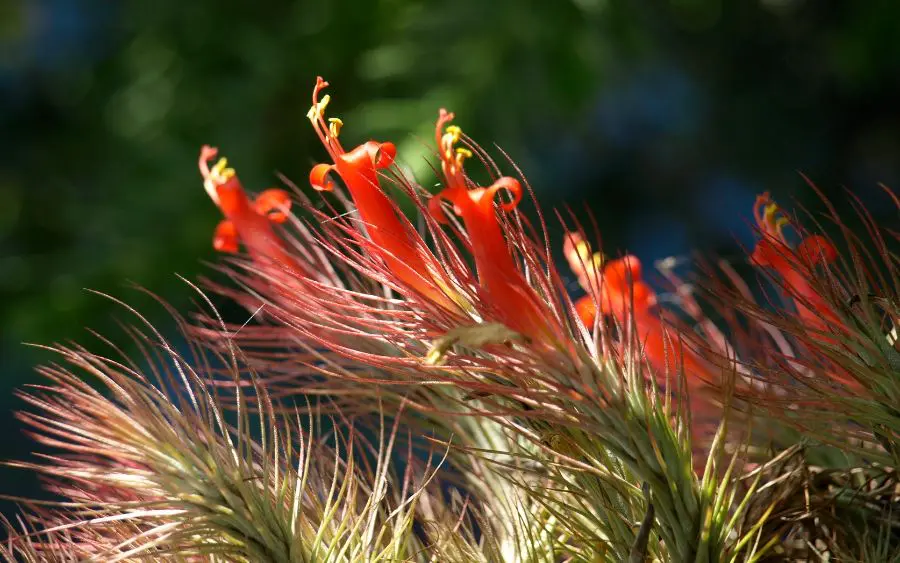
Native To: Venezuela | Average Size: 1-3″ | Flowers: Deep orange-red tubular flower | Likes: Bright, indirect sunlight | Dislikes: Direct sunlight; excess moisture left on its leaves | Watering Instructions: Soak for 10 mins twice a month, mist every few days as needed.
The Funckiana’s somewhat startling name belies the understated elegance of this tiny air plant. It almost resembles a delicate twisting pine branch. As the Funckiana grows more mature, it develops cute little pale pink tips.
This Tillandsia is a sturdy air plant and is suitable for beginners. Because of its woody base, Funckiana especially doesn’t like excess water collecting at its bottom. After watering, make sure to shake off any droplets and/or allow it to dry off upside down before putting it back in its spot.
3
Tillandsia Loliacea
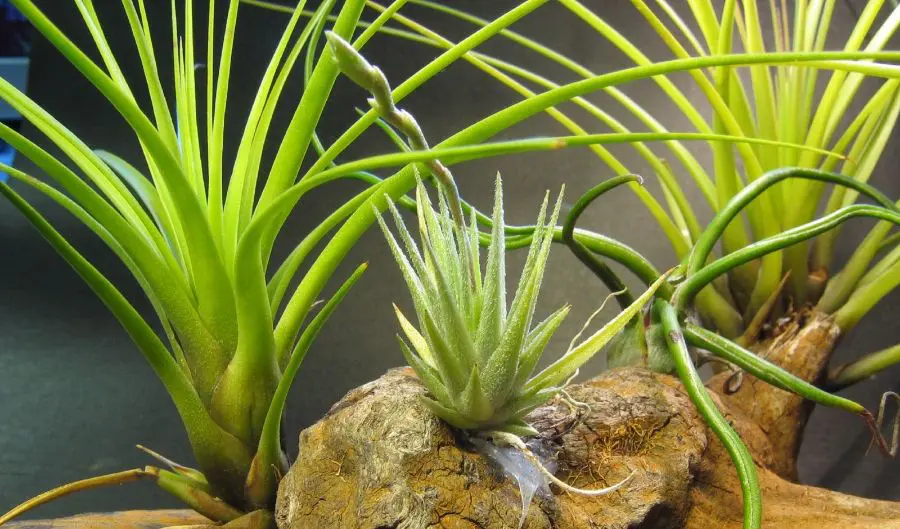
Native To: Bolivia, Brazil | Average Size: 1-1.5″ | Flowers: Yellow micro-flowers | Likes: Bright, indirect light, good air circulation | Dislikes: Direct sunlight, excess water on leaves, temps below 50 degrees | Watering Instructions: Soak for 10 mins, 2x per week, with additional misting as needed
This little charmer only grows to be an inch or so, but it shoots out a flower stalk that’s at least double its height. At the end of that stalk, you’ll find some teensy tiny yellow flowers. Loliacea’s leaves have a moderate amount of trichomes, so there’s also some fuzz involved.
Because it’s so little, there are endless charming ways to display this air plant, like a tiny plant pot, seashell, or any other hollowed out bits or bobs you may have found in the woods or on the seashore.
4
Tillandsia Ionantha Rubra
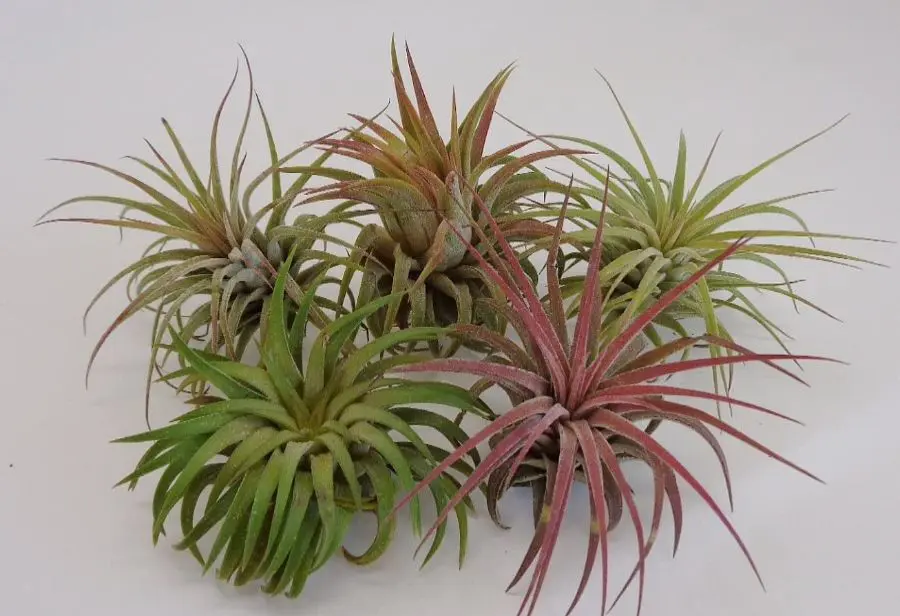
Native To: Guatemala | Average Size: 2-3″ | Flowers: Purple flower | Likes: Bright, indirect sunlight; also tolerates fluorescent/office lighting | Dislikes: Direct sunlight; environments colder than 50 degrees | Watering Instructions: Prefers regular soaking to misting. Soak for 10 mins, once a week. Can also mist 2-3 times a week as needed in warmer/drier conditions.
Plump, fuzzy and soft, the Ionantha Rubra is a highly appealing addition to any air plant collection. If it weren’t a plant, we’d want to pinch its cheeks; it’s so darn cute.
Because of Ionantha Rubra’s rounded shape, they’re the ultimate terrarium-dwellers. They can get as large as 3 or 4″ and should produce blooms around twice a year. Rubras do exceptionally well in groups, showing off together during their blooming period when they turn a pretty blush red color and produce a purple flower.
5
Tillandsia Maxima
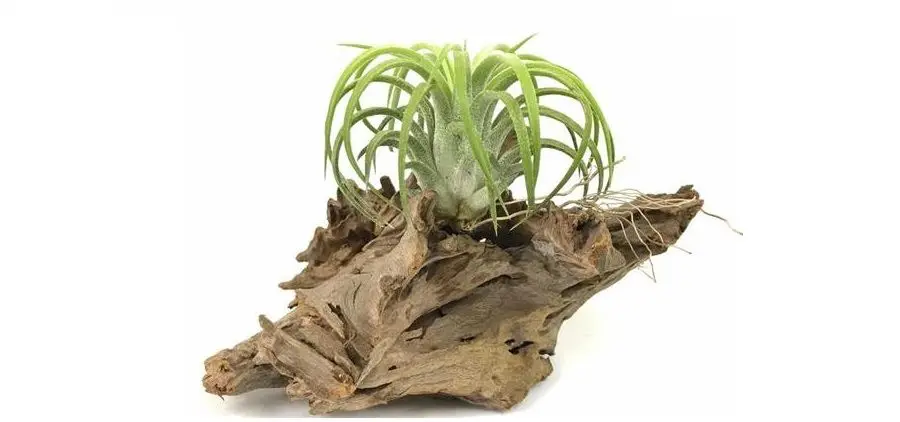
Native To: Oaxaca, Mexico | Average Size: 1-4″ | Flowers: Vivid purple flower | Likes: Lots of sun, does well near windows | Dislikes: Loves sun, but can get burns in direct sunlight | Watering Instructions: Dunk or mist twice a week; soak for 2-4 hours once a month
Handsome Tillandsia Maxima loves a window, and it will tend to color more if it has access to plenty of indirect sunlight. A lovely pale green, with spiky leaves resembling the top of a pineapple, it turns a deeper coral as it blooms, and then produces purple flowers from its center.
This medium-sized air plant looks great in just about any container. However, its subtle rosy tones look especially lovely in a macrame holder or ceramic container.
6
Tillandsia Capitata ‘Peach’
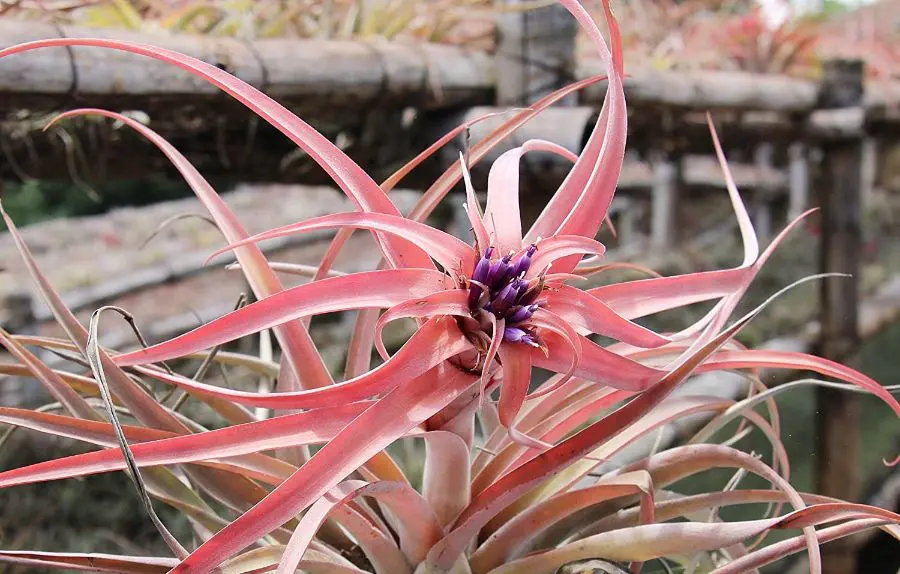
Native To: Mexico, Cuba, Honduras, and Dominican Republic | Average Size: 2-8″ | Flowers: Purple flower | Likes: Warm to hot temps, air circulation, 12 hrs sunlight | Dislikes: Temps below 60 degrees; sitting in water or on wet surfaces, remaining wet for more than 3 hours | Watering Instructions: Drought tolerant. Soak for 20 mins once or twice monthly, mist every 3-4 days
The Capitata has more trichomes, so its leaves have a silvery hue and are quite soft and fuzzy to the touch. True to its name, when it comes time to bloom, Tillandsia Capitata turns a pretty peach color just before producing a purple flower.
This air plant prefers a drier environment; be careful not to over-water.
7
Tillandsia Bulbosa Guatemala
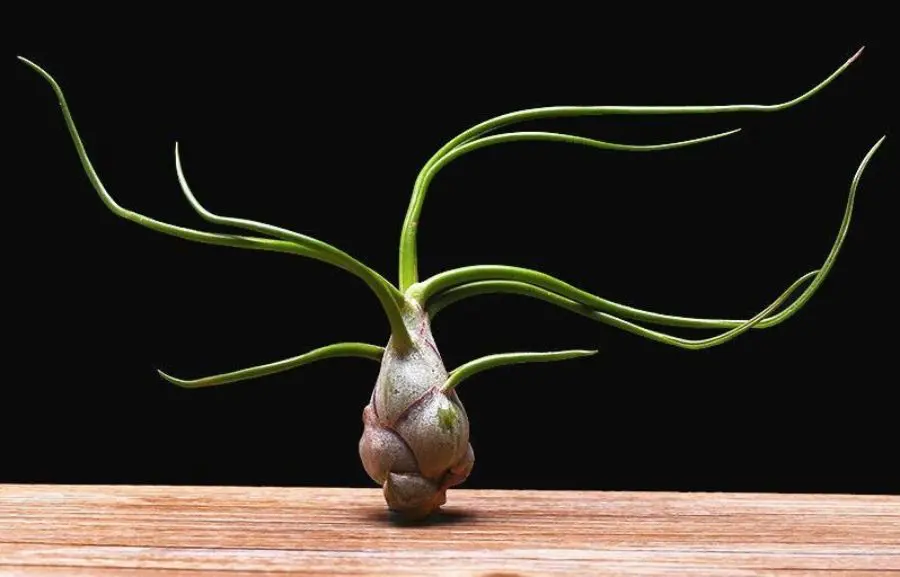
Native To: Guatemala, Belize, Central America | Average Size: 3-4″ | Flowers: Violet | Likes: Moderate to bright filtered sunlight | Dislikes: Excess water at its base | Watering Instructions: Soak for 10 mins at least once a week, mist as needed
If you want a more sculptural air plant, the Bulbosa Guatemala is a fun variety to play with; as is the similar (but slightly larger) Bulbosa Belize. The Guatemala clocks in at around 3-4″ while the Belize can reach more like 7-9″.
Bulbosas are super cool air plants, resembling little sea creatures. This Tillandsia has very few trichomes, so its leaves are shiny and stiff, adding to the spindly look. As it produces flowers, it really puts on a show, turning a gorgeous red (or sometimes yellow) and producing violet flowers.
Have some fun with Bulbosa’s decorative qualities. Some people put this air plant in a large seashell or inside the shell of a sea urchin to play up its “sea creature” vibe.
8
Tillandsia Streptophylla
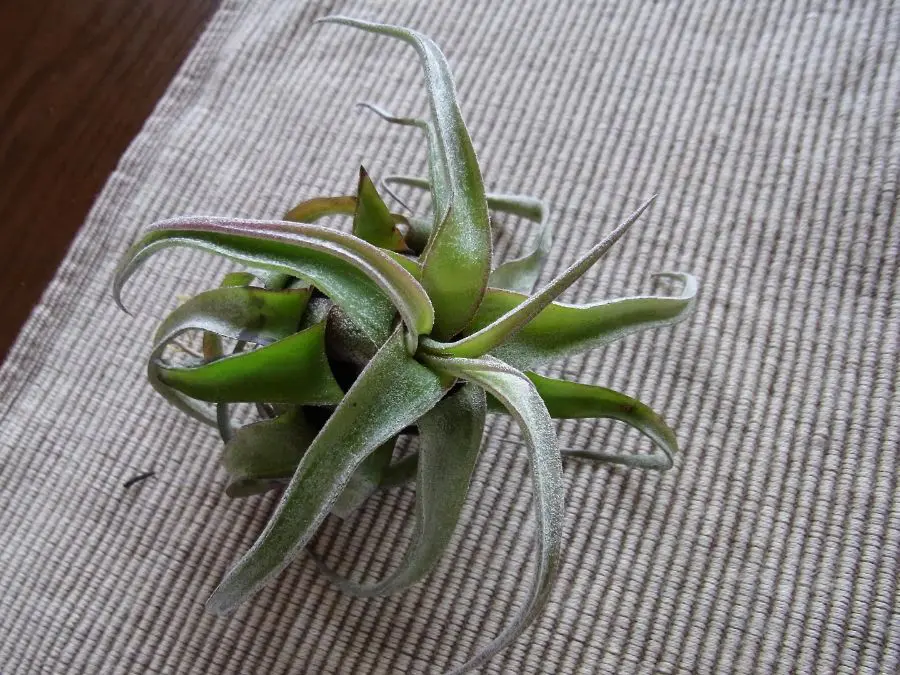
Native To: Central America, Mexico, West Indies | Average Size: 3-5″ | Flowers: White buds bloom into purple flowers | Likes: Bright, indirect light; warm environments between 50-80 degrees | Dislikes: Closed containers or terrariums; excessive water or humidity | Watering Instructions: Needs less water than most air plants. Best to dunk rather than soak, 2-3 times per week. (Leaves curl more as it gets dehydrated.)
This Tillandsia isn’t as dramatically colorful as some other types of air plants. Still, we love its striking curly leaves — Streptophylla actually translates into “with twisted leaves.”
Tillandsia Streptophylla is also known as the blushing plant. When it does bloom, the center of the plant blushes a deep pink, and it produces purple tube flowers.
This air plant doesn’t like to be enclosed, so make sure it lives in an airy spot with good circulation and plenty of room to breathe.
9
Tillandsia Xerographica
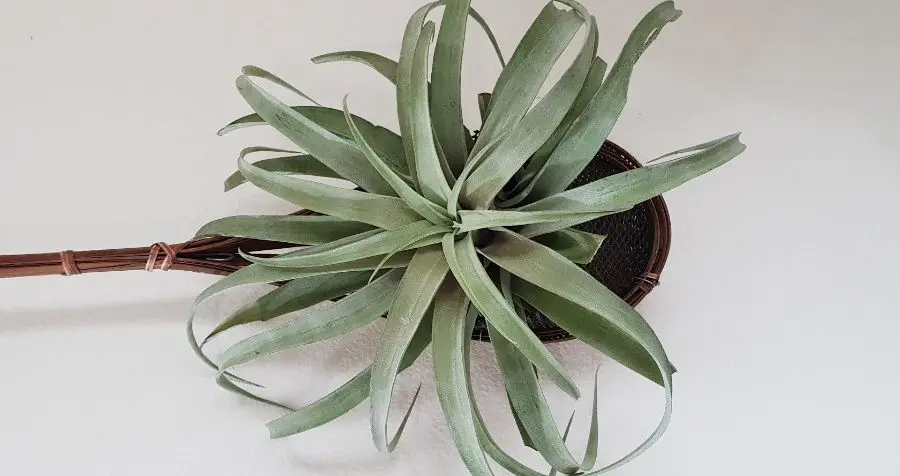
Native To: Mexico, El Salvador, and Guatemala | Average Size: 4-7″ | Flowers: Usually only once in its lifetime, pale lilac flowers with a spiky inflorescence | Likes: Lots of indirect suns; drying quickly after watering | Dislikes: Soaking; humid environments | Watering Instructions: Lightly mist every 2-5 days. Turn upside down after more extensive watering or dunking so water doesn’t accumulate at the center
Known as the “King of Tillandsias” or “Queen of the Air Plants,” Xerographica is a royal choice. Its pretty, thick silver leaves and unique curvy leaf structure are prized. This tough air plant is also very low maintenance and drought-resistant.
Other fun facts: since they’re from an arid climate and slower-growing, they tend to live longer than most air plants. And Xerographica is the only air plant that can reach up to 3 feet in size!
In the wild, this Tillandsia is often hanging in the branches of subtropical trees. You can mimic this in your home environment by using an aerium, an open glass terrarium suspended with string or filament.
10
Tillandsia Flabellata
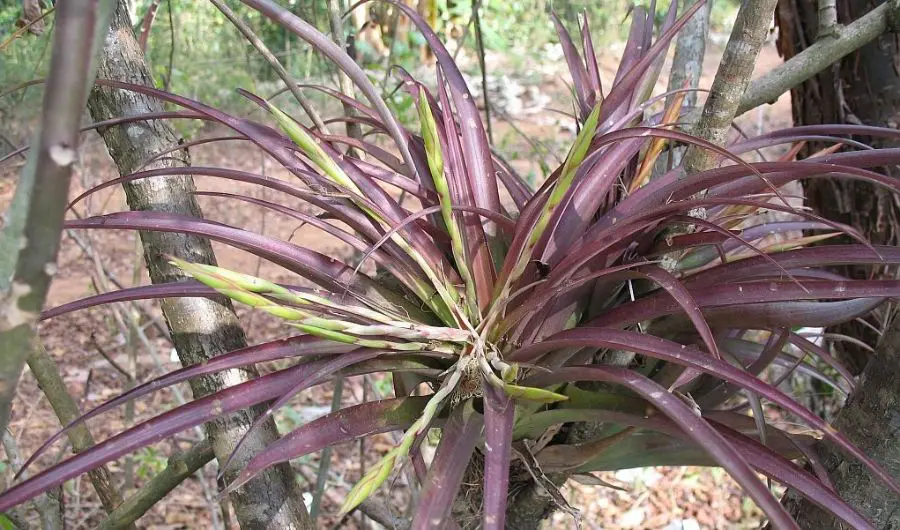
Native To: Southern Mexico | Average Size: 4-12″ | Flowers: Coral spike with violet flowers | Likes: Some humidity; bright, indirect light; good air circulation | Dislikes: Direct sunlight; temps under 50 degrees or over 80 | Watering Instructions: Soak for 10 mins once or twice per week; mist in between as needed
One of the more unusual Tillandsia on our list, the Flabellata is large and striking. It features shiny, thick leaves that range from vivid green to a more brownish-red. Flabellata needs a bit more moisture, requiring a soak at least once a week, plus a little misting inbetween.
When it blooms, the Flabellata treats you to a spiky bouquet of reddish flowers. Go for drama with a hanging pot or display. Or, this is one of the few varieties of air plants you can plant “terrestrially” — in other words, setting it atop well-drained soil, compost, or a base such as moist sphagnum moss.
3 Keys to Tillandsia Care
While there are many different types of air plants and care, there are a few universal things to keep in mind when tending all varieties of Tillandsia.
- Water. Watering instructions for most types of air plants are similar: misting 1-3 times a week, supplemented with a good soak at least once a month. Adjust according to season and your particular climate, as well as variety-specific watering instructions.
- Light. Tillandsia love light and sun — but indirectly. Putting your air plant into full, direct sun will likely result in burns. Ideally it would help if you tried to find a sunny spot somewhere near a window for your air plant, but as long as there’s indirect sunlight nearby, it should be content. Some plants can even do fine in an office environment with fluorescent lights.
- Lifecycle. Prepare yourself for this fact about air plants: after they bloom, they will die. Which is a little sad! But, here’s the happy thing about this fascinating plant: as they’re winding down, they will produce offsets, or “pups,” that you can remove (once they’re mature) and establish elsewhere. The circle of life of a Tillandsia means that if you properly care for your air plant, you’ll always have babies!
Further Reading
